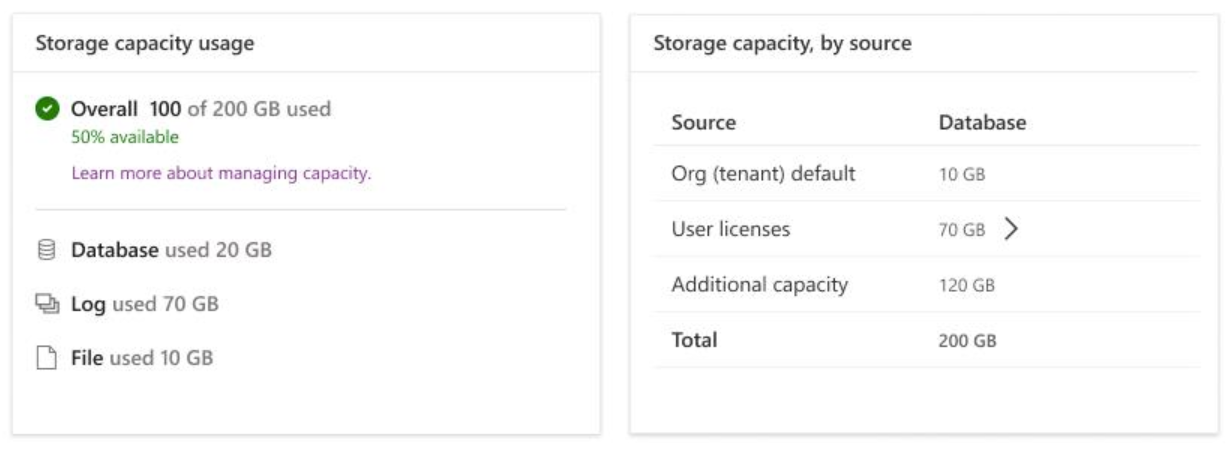Storage reporting will be based on customer licenses and capacity add-ons
Important
This content is archived and is not being updated. For the latest documentation, see Microsoft Power Platform product documentation. For the latest release plans, see Dynamics 365 and Microsoft Power Platform release plans.
| Enabled for | Public preview | General availability |
|---|---|---|
| Admins, makers, or analysts, automatically |  Apr 1, 2020 Apr 1, 2020 |
 Apr 24, 2020 Apr 24, 2020 |
Business value
New updated storage reporting will provide clarity to our customers for managing the capacity.
Feature details
In April 2019, we introduced Common Data Service capacity storage that is optimized for and divides data into different storage units across relational data, attachments, and audit logs. New Dynamics 365 Customer Engagement and Power Apps customers receive a tenant wide default entitlement for each of these three storage types and additional per user subscription license entitlements. Extra storage can be purchased in 1GB increments, if needed. Existing customers are not impacted by this change until the end of their current Power Apps, Power Automate or Dynamics 365 subscription, when renewal is required. This means that two licensing models will be in market.
Following the introduction of Common Data Service capacity, we updated our capacity reporting to show database, log, and file entitlement for all our customers. This change in reporting has caused some confusion to customers who are still on the previous licensing model. We are now addressing this.
If you are a customer who is still on the previous licensing model for storage, you will see one single capacity for entitlement. If you are a customer who transitioned to the licensing model introduced on April 1, 2019, you will see your storage capacity entitlement and usage by database, log, and file as it appears in the Power Platform admin center today.

